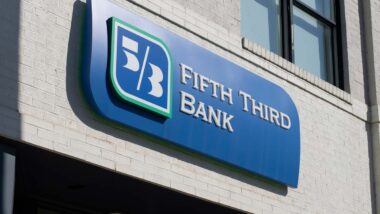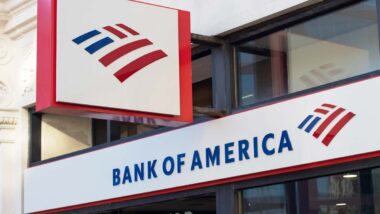Top Class Actions’s website and social media posts use affiliate links. If you make a purchase using such links, we may receive a commission, but it will not result in any additional charges to you. Please review our Affiliate Link Disclosure for more information.

Consumers also report issues with returned item fees, or NSF fees, noting that they have been charged multiple NSF fees for the some transactions.
What Is a Returned Item Fee?
A returned item fee is officially known as a non-sufficient funds (NSF) or insufficient funds fee. A bank can charge a customer an NSF fee if their account does not have enough money to cover a transaction. This kind of transaction is known as a failed (or returned) transaction.
These fees can be charged for payments made on debit cards or by check. A check written against an account with insufficient funds to make the payment, is colloquially known as a “bounced” or “bad” check. When a check bounces, a bank can refuse the payment and then charge the holder of the account a returned item fee.
Online banking has been an unexpected source of confusion for consumers attempting to avoid NSF fees and overdraft fees. Online banking is often touted as a convenience that gives consumers easy access to necessary banking information. However, it may not always be accurate, as many online banking services take time to update. Relying on outdated or inaccurate online banking information may cause customers to make financial choices that they might not have if they had had correct information.
The problems with online banking are present throughout the industry, explains Forbes. Reportedly, there has been an increase in demand for online banking in recent years. However, the technology that is available for the services has not caught up to this demand. This means that consumers may not always have access to the most current or accurate information they need to make purchasing decisions and avoid returned item fees.
If a consumer views online banking information that presents an outdated view of their finances, they might think they have enough money to make a purchase, when they do not have enough money at the time of purchase. In these instances, they may be hit with an unexpected fee, putting their account further into the negative. They could incur a returned item fee (NSF fee) if they do not have overdraft protection or an overdraft fee if they do.
In recent years, the number of NSF fees charged has gone down. In part, this is because consumers do have more access to their banking information through online banking. According to Forbes, this means that for all its flaws, online banking does provide valuable information. Nonetheless, this does not mean that NSF fees are going away — NSF, returned item fees, and overdraft fees are still a major profit source for banks.
Is a Returned Item Fee the Same as an Overdraft Fee?
Returned item fees can seem very similar to overdraft fees. Indeed, some people use the terms interchangeably. However, they are actually different kinds of fees made on different transactions.
Overdraft fees are made when a financial institution lends money to cover a transaction that an account does not have available — and this is only done if the customer has voluntarily opted into an overdraft protection program.
By contrast, NSF fees are charged when a presented payment has to be returned because of insufficient funds. One problem that consumers have encountered with these fees is that since they are generally a fixed amount, a customer may find themselves hit with a very high fee compared with a very small deficit in their account.
Are Multiple Returned Item Fees Legal?
While charging a returned item fee or NSF fee is not illegal, a growing number of customers claim that their banks are unfairly using these fees to charge multiple fees on the same transaction. Customers claim that paying multiple returned item fees is an unfair abuse of the practice.

Banks may also charge multiple overdraft fees on the same transaction by re-processing declined transactions. Each time the transaction is re-processed, a new fee is incurred. Many consumers have claimed that their bank later attempted to re-process the denied transaction without their knowledge or consent. Many consumers report not being aware of these attempts to re-process their transactions until their bank statement arrived.
When NSF fees can be $30 or more per charge, being charged multiple times for the same transaction can very quickly build up, sometimes to a charge of more than $100.
Filing a Returned Item Fee Lawsuit
More and more bank and credit union customers are filing lawsuits over deceptive or unfair practices, including charging excessive NSF fees for a single transaction. Several major banks have been hit with these lawsuits, including Bank of America, Capital One Bank, Navy Federal Credit Union and Digital Federal Credit Union, among others. Many lawsuits have also been filed over unfair overdraft fees, another banking fee that brings in billions each year.
If you have been hit with more than one returned item fee for a single transaction, you may be able to file a lawsuit or join an existing class action lawsuit and qualify for compensation. Top Class Actions can connect you with an experienced attorney to help you determine if you have a claim.
Join a Free NSF Fee Class Action Lawsuit Investigation
You may qualify to join this NSF fee class action lawsuit investigation if you were unfairly charged NSF fees by one of these banks:
- Bancfirst
- Bell Bank
- Busey Bank
- Center Bank
- CenterState Bank
- Flagstar Bank
- Glacier Bank Wings Federal Credit Union
- Midwest One
- NBT Bank
ATTORNEY ADVERTISING
Top Class Actions is a Proud Member of the American Bar Association
LEGAL INFORMATION IS NOT LEGAL ADVICE
Top Class Actions Legal Statement
©2008 – 2024 Top Class Actions® LLC
Various Trademarks held by their respective owners
This website is not intended for viewing or usage by European Union citizens.















14 thoughts onWhy Do Banks Charge a Returned Item Fee?
Add me
Add me
Add Me DFCU IS A RIP OFF
add me